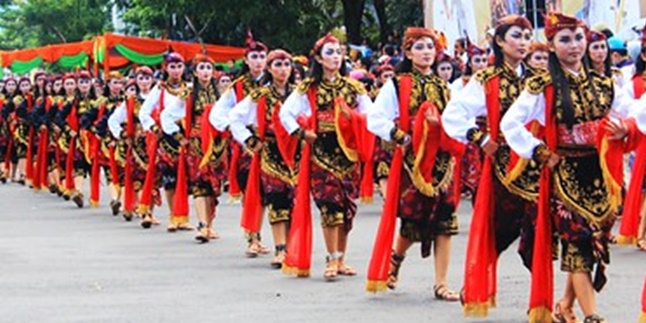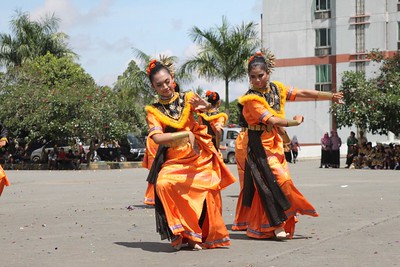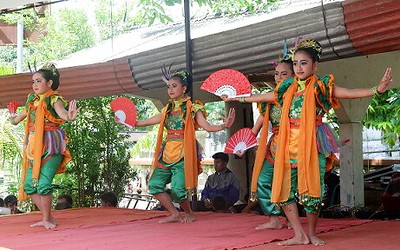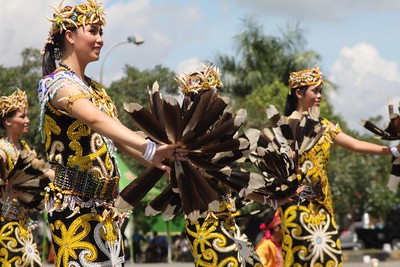50 Short Romantic Good Night Words, Guaranteed to Make Your Partner Blush
Here are some romantic good night words that can make your partner blush. What are those words? Let's check them out KLovers.

Kapanlagi.com - Indonesia has a variety of preserved arts, one of which is dance. It can even be said that dance art never lacks enthusiasts. From generation to generation, new dancers emerge, keeping dance art sustainable. In learning dance art, there are many things to consider, such as various floor patterns.
Floor patterns are important in dance performances, especially traditional dances performed in groups. Floor patterns make the dancers look cohesive, organized, and more comfortable in their movements. With various floor patterns, dancers can also avoid the risk of colliding with each other.
Floor patterns serve as a reference for dancers when transitioning. Each type of dance can have different floor patterns. For those of you who are interested in learning and experiencing traditional dance, it is important to know various floor patterns. Summarized from various sources, here are some floor patterns, as well as other important things in dance art that need to be known.

In traditional group dances, there are several types of floor patterns used. One of them is the horizontal floor pattern. As the name suggests, this floor pattern requires dancers to line up horizontally from left to right. This type of floor pattern is often associated with the philosophy that humans have a bond with each other.
There are quite a few traditional group dances in Indonesia that apply the horizontal floor pattern, such as the Saman dance from Aceh or the Indang dance from West Sumatra.

The second floor pattern is the vertical floor pattern. In contrast to the horizontal floor pattern, this floor pattern requires dancers to line up straight from front to back (not sideways from left to right). The vertical floor pattern is commonly used in classical dances. This floor pattern is said to symbolize the deep bond between humans and God, the Creator.
Some traditional group dances that apply the vertical floor pattern include the Serimpi dance from Central Java, the Yospan dance from Papua, the Pasambahan dance from West Sumatra, and the Baris Cengkedan dance from Bali.

In addition to horizontal and vertical, another type of floor pattern is the diagonal floor pattern. This floor pattern is created by forming a diagonal line or from the right angle to the left or vice versa. The diagonal floor pattern can create a beautiful and strong impression in the performed dance.
There are several types of traditional group dances that apply this type of floor pattern. For example, Sekapur Sirih dance from Jambi, Gending Sriwijaya dance from South Sumatra, and Pendet dance from Bali.

The fourth and last floor pattern is the curved floor pattern. The curved floor pattern can be created in various forms, such as a circle, figure eight, letter U, or even a snake-like curve. The curved floor pattern can create a beautiful impression in the dance.
There are quite a number of traditional dances that apply the curved floor pattern. Some examples include Ma'badong Toraja dance from North Sulawesi, Piring dance from West Sumatra, and Randai dance from West Sumatra.

In addition to various floor patterns, there are other things that dancers must also know and master. However, the most important thing for traditional dancers is to understand the elements of dance art. The elements of dance are no less important than various floor patterns. The elements of dance art include the following.
1. Wiraga
One of the most important elements in dance is wiraga. Wiraga comes from the Javanese word 'raga' which means body. This element is a symbol of dance art that is manifested through body movements. This is in accordance with dance art which is known for displaying beautiful movements.
2. Wirama
The second element of dance is called wirama. This dance element is no less important than the first one. Wirama is related to rhythm in dance performances. As we know, in order to produce harmonious and beautiful movements, dance must be performed according to a certain rhythm. To determine the rhythm, dance is usually accompanied by musical instruments.
3. Wirasa
The third element of dance is wirasa. The element of wirasa dance is related to dance art that contains deep messages or meanings. This is because, like other arts, dance can also be a medium of expression and communication. In addition to movements, expressions in dance are often displayed through certain facial expressions, depending on the theme and message to be conveyed.
Those are among the reviews regarding various floor patterns in dance along with its three main elements. Hopefully, it will be beneficial and can broaden your knowledge.
(kpl/psp)
Cobain For You Page (FYP) Yang kamu suka ada di sini,
lihat isinya
Here are some romantic good night words that can make your partner blush. What are those words? Let's check them out KLovers.
Did you know that there are various types of rice? Even, each type of rice has its own characteristics and advantages. Whether it's the aroma, texture, or taste that differs. So, how many types of rice are there?
Melodic musical instruments are instruments that produce melody in songs. What is the explanation and what are their types?
In pencak silat, the purpose of the defense movement is to ward off enemy attacks. How is the explanation clearer? Check out the following review.
These are some benefits of sunflowers that are rarely known by many people. What are the benefits of sunflowers? Let's check it out KLovers.
Are you interested in decorating your home with beautiful and fragrant flowers? But confused about what types of flower plants can be your collection. Don't worry, because this article will discuss the types of flowers that can inspire you to plant. Curious?
Consumption is the activity of using goods or services, especially in the household domain. Understand the explanation by reading the following review.
The benefits of ice cubes for the face should not be underestimated. What are the benefits?
Here are some procedures for bathing a corpse correctly along with the readings. Let's check it out, KLovers.
Aside from its delicious taste, chia seeds contain various nutrients and vitamins that are powerful in preventing various body diseases.
Here are some heartwarming farewell words. Let's check it out KLovers.
To increase your knowledge about apples, it doesn't hurt to know the types of apples along with their taste and characteristics. Curious? Check out the following review.